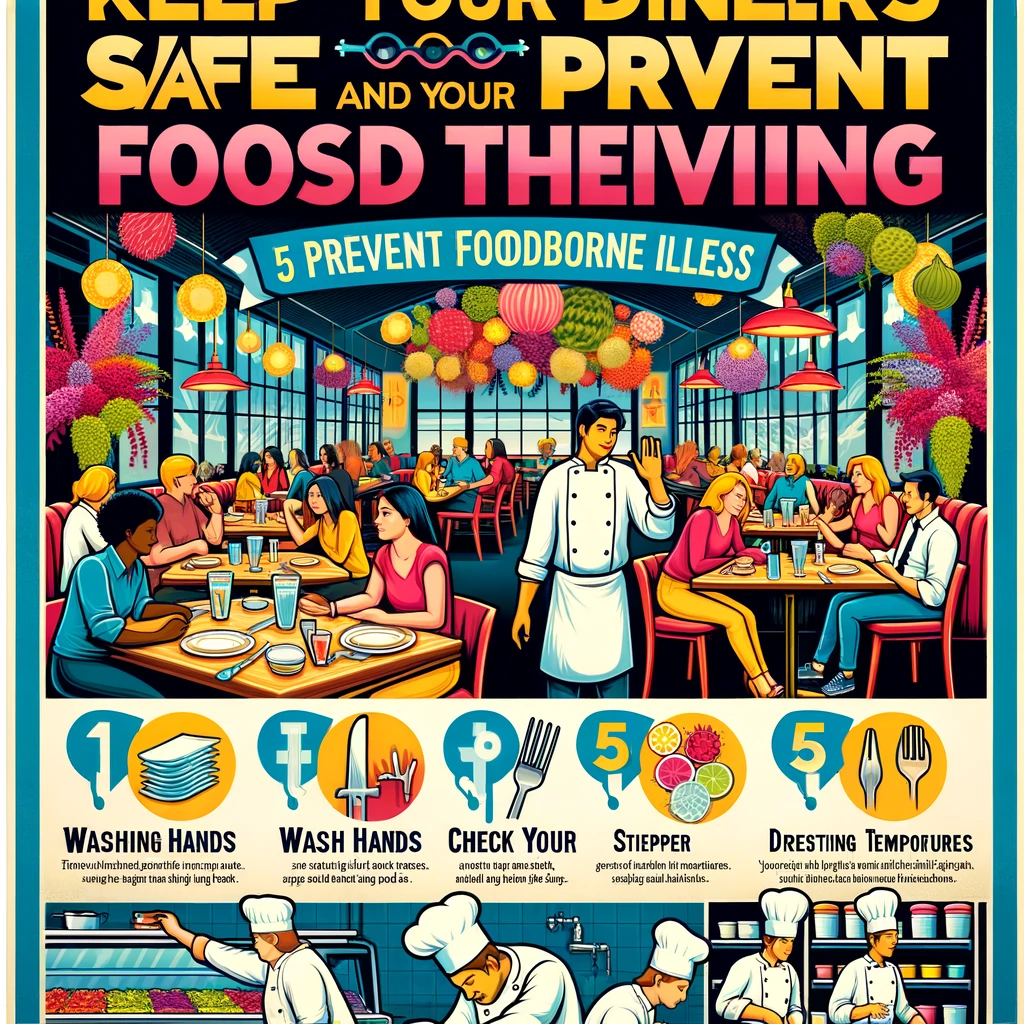Keep Your Diners Safe and Your Restaurant Thriving: 5 Key Steps to Prevent Foodborne Illness
Protect your customers, your reputation, and your business with these essential food safety practices.
Introduction
Every year, millions of people fall ill from foodborne illnesses, often contracted at restaurants. As a restaurant owner, protecting your customers and your business from this preventable danger is paramount. Here are 5 key steps you can take:
1. Handwashing: The Unsung Hero
It’s simple, yet crucial. Make handwashing the cornerstone of your food safety program.
- Ensure proper handwashing stations are readily available and accessible throughout the kitchen.
- Train your staff on proper handwashing techniques and emphasize frequent washing: before and after handling food, using the restroom, changing gloves, and more.
- Eliminate excuses by addressing issues like sink availability and time pressure. Proper hand hygiene can prevent outbreaks of norovirus, E. coli, and salmonella.
2. Cleanliness: A Three-Tiered Approach
Not all cleaning is created equal. Train your staff on the three levels of cleanliness:
- Cleaning: Removing visible dirt and debris.
- Sanitizing: Using chemicals to kill bacteria on surfaces.
- Disinfecting: Leaving a chemical disinfectant on surfaces for a specific time to kill viruses and other pathogens.
Stress the importance of following specific instructions for each level to ensure true cleanliness and prevent contamination risks.
3. Separate to Conquer: Prevent Cross-Contamination
Prevent harmful microbes from jumping from one food item to another by following these practices:
- Create designated areas in your kitchen to prevent raw meat, produce, and allergens from mingling.
- Use separate utensils and cutting boards for different food types.
- Thoroughly clean and sanitize work surfaces after each use, especially after handling raw ingredients.
4. Educate Your Diners: Knowledge is Power
While you strive for perfection, sometimes undercooked food might slip through. Use these strategies to educate diners:
- Include disclaimers on your menu for high-risk foods like steak or sushi, highlighting potential risks associated with undercooked items.
- Train your wait staff to inform diners about these risks, empowering them to make informed choices.
5. Empower Your Team Through Training
Food safety isn’t just for chefs. Empower your entire team with proper training:
- Ensure all employees, from managers to wait staff, receive certified food safety training.
- Use a variety of engaging training materials to cater to different learning styles and experience levels.
- Regularly reinforce the importance of food safety within your organization, making it a shared responsibility and a top priority.
Bonus: Best Practices for Restaurant Owners
- Develop a formal food safety plan outlining clear responsibilities and procedures.
- Gain buy-in from management by highlighting the reputational and financial risks of foodborne illness outbreaks.
- Consider food safety insurance to further protect your business from potential liabilities.
Conclusion
By implementing these essential steps and best practices, you can create a culture of food safety in your restaurant, protecting your customers, your reputation, and your bottom line. Remember, food safety is a continuous journey, not a one-time destination. Stay vigilant, educate your team, and prioritize this essential aspect of responsible restaurant ownership.


